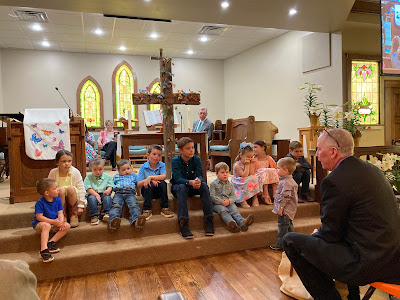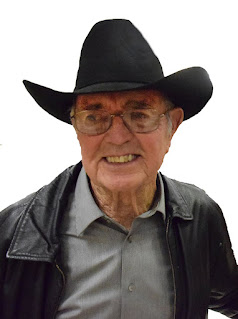By Mike Haynes
I
never have liked the saying, “You can’t go home again.” A book by Thomas Wolfe
published in 1940 made it popular, and I’m sure that circumstances make it true
for some people. Even Jesus said, “No prophet is accepted in his hometown.”
But
I’m not a prophet, so I like much better the words from 2005 of rock band Bon
Jovi: “Who says you can’t go home?”
I
did on Easter Sunday.
I’m
fortunate that I live close to my hometown and can go back fairly often.
Interstate 40 bypassed it 40 years ago, its population is half the size that it
was when I was a kid, scores of the people I knew back then have passed away,
and I don’t know many of the newcomers who have moved in since I went off to
college.

The Easter sermon
But
sitting on the same second pew last week that my family has occupied for
70-plus years, I certainly was home again.
I’m
blessed. My cousin, 18 days younger than me, has been the Methodist Church’s
pastor for close to 30 years. My sister, who moved back home a decade ago after
a coaching career, leads the hymns and the children’s music. Last Sunday, the
congregation joined the dozen little kids – two of them sons of my niece and
her husband – in singing, “I’ve got the joy, joy, joy, joy down in my heart …
Where? … Down in my heart to stay!”
And
a big portion of my extended family – more than 20 – filled several of the
front rows, just in front of a slightly larger group of another family that has
graced the church since I can remember.
My
youngest brother and two cousins were in the choir, and another brother held
down the end of our pew. My 93-year-old dad is having trouble getting around
these days, so he and one of my aunts, also a little mobility-challenged, sat
in the foyer at the back of the sanctuary. Dad sang in the Methodist Men’s
Quartet for years, and my aunt used to be the choir leader. They were given
microphones Sunday, so even from our spots on the second pew, my wife and I
could hear Dad singing bass on “In the Garden.”
Of
course, the focus wasn’t my family. It was Easter, so the community was
well-represented. My cousin, the preacher, pointed out that it would have been
the 95th birthday of a woman who was one of my childhood Sunday
school teachers. She had passed away four weeks earlier. Her birth in 1929 also
had been on Easter Sunday.
Even that remembrance wasn’t the focus. My cousin’s sermon directed our minds and hearts squarely on the astounding, historical story of Jesus Christ’s death on the cross to take the punishment for all our sin, his miraculous resurrection from the dead and the provision that if we believe in him, “Because I live, you shall live also.”
 |
| Children's time |
My
cousin stressed that the first three disciples who came to Jesus’ tomb on
Sunday morning – John, Peter and Mary – had different reactions to Christ’s
body being gone. John and Peter “went home,” while Mary stayed at the location
where she last had seen her Lord’s body. And she was rewarded when Jesus appeared
and spoke to her.
The
sermon borrowed a few elements from my cousin’s first Easter sermon in 1994 –
another return to the past. What drew tears from a few eyes, though, was his
recalling of the heartwarming decision he had made to follow Christ fully –
which resulted in his becoming a minister.
Standing
in front of an Easter cross, he pointed to the exact spot at the altar where he
had experienced a spiritual breakthrough three decades ago and had begun a
journey to become a hometown pastor.
After church, my family and a few friends
enjoyed a big Easter meal at my dad’s house – in the same kitchen and den where
my four siblings and I grew up. The children raced to find eggs in the front
yard where we had done the same.
So
sometimes, you can go home. But if I paid attention to my cousin’s sermon, I
should remember that believers have a home to go to that we never will leave.


















